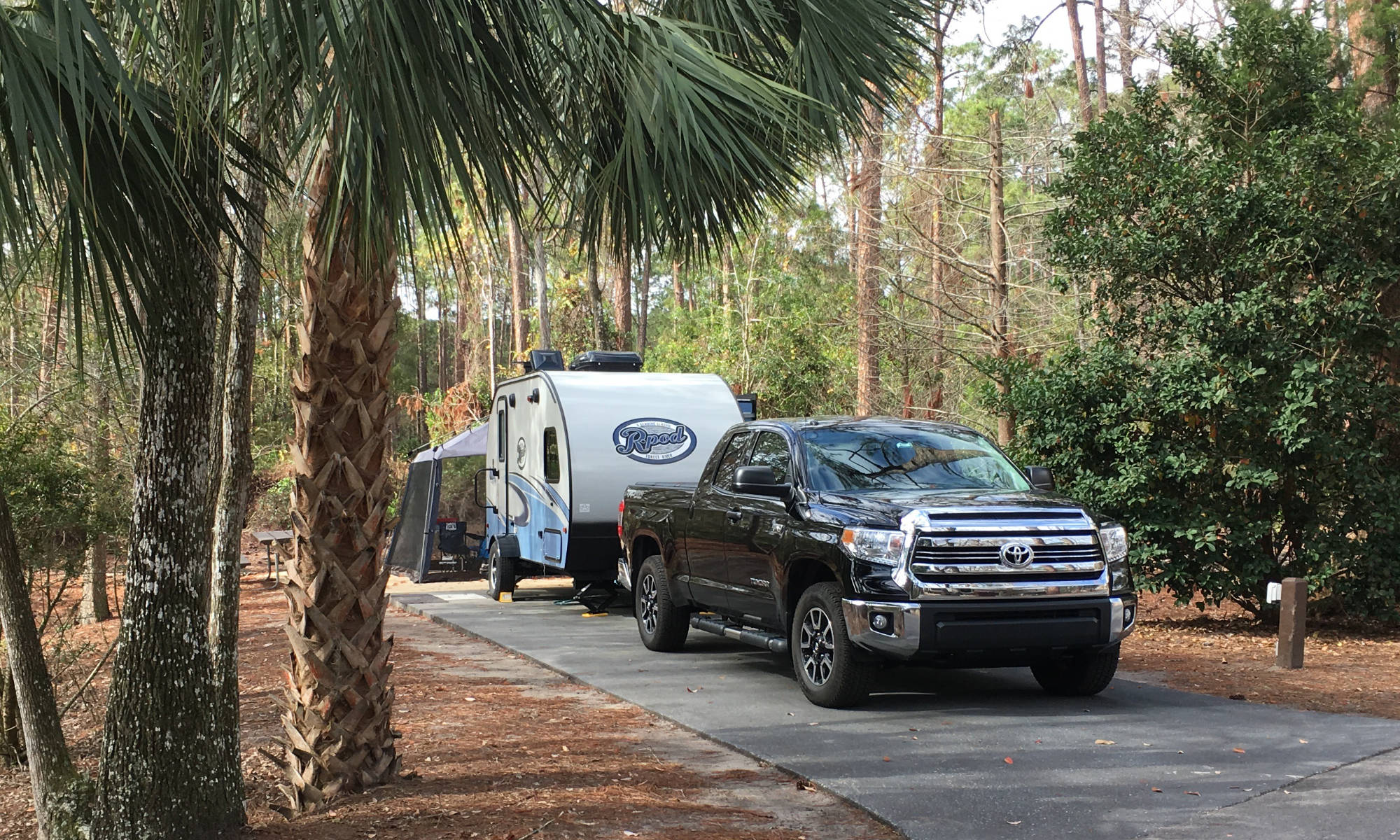Click here to sign up for reminders when new blogs are posted.
In this used RV buyer’s inspection guide we’ll walk through critical issues you should be able to inspect (before you buy) when looking at your next RV. This may help you have fewer surprises down the road.
There are many people buying RVs right now for the first time. This is due to recent travel restrictions and the continued desire to get away from home. RVs provide a near-ideal solution and allow us to travel and maintain social distance. If you are new to all this, it can be easy to end up with a less-than-great first ownership experience.
So, let’s walk through the inspection process:
OUTSIDE
1. Inspect the frame and undercarriage
First look at the frame and undercarriage. If you do have a crawler you can bring, all the better to inspect the undercarriage and frame. If not, bring a towel to lie on. Also, a good headlight will allow you to see issues better. Look for significant rust issues or any other damage.
2. Inspect the tires for age and uneven wear
You can learn more on how to read the tire sidewall information from my Tire Basics video on the channel (insert here). Generally, you’ll want to see if there is any uneven ware which could spell trouble in terms of the axle. Unless the tires have been recently replaced, make sure you add replacing the tires into your offer or into a discount on the price.
3. Inspect the outside fiberglass and seams
The outside fiberglass and seams are likely the most important items to inspect. If something is amiss here, you will likely have water leaking into the cabin somewhere. Take your time looking at this. All seems and cutouts should be properly caulked without any cracking.
4. Inspect the roof
To me, inspecting the roof is extremely important as it will take the brunt of the weather. You should ensure that the seller has a way for you to inspect the roof. An 8-10’ ladder is optimal. If not available, see if the seller has any pictures of the roof or if possible, bring your own ladder or even a drone. Look at all cutouts for bad caulk or cracking.
5. Inspect the storage area
The outside storage area is an early indicator of issues. It can tell you a lot about the trailer’s condition. Make sure the seller has it free of gear and debris before you arrive so you can see insider easily. The storage area should be free or any noticeable discoloration indicating water intrusion.
6. Test the external electrical
Inspecting the external electrical is not optional. Make sure everything electrical outside the trailer works. Make sure your seller has a good battery hooked up to the trailer before you arrive. It should also be clear if the battery is a part of the potential sale. Test all the outside lights and outlets.
7. Test the seven-pin connector
Don’t forget to test the seven-pin connector. You’ll want to back up your tow vehicle and plug in the 7-pin. Remember to turn you lights on and check the blinkers, driving lights and brake lights (you’ll need someone to look at this while you test).
INSIDE
8. Test the electrical systems inside the trailer
Now that we’ve looked at the outside of the trailer, let’s look inside. There is a lot to test inside the trailer, starting with the DC and AC sides of the electrical systems. The Trailer has a converter that works to charge the battery when plugged into shore power. You’ll want to ensure this is working. Once again, make sure the seller has a good battery connected to the trailer before you arrive. Test all lights and outlets as well as major appliances.
9. Test the propane system
To test the propane system, the seller will need to have propane hooked up to the trailer. Make sure this is communicated before you arrive to inspect the unit. You’ll want to test the stove, furnace, water heater and fridge on propane to ensure the all fire up.
10. Check that the plumbing in the trailer
Ensure the seller has water in the fresh-water tank before you arrive and ask if the seller has a water pressure regulator, so you can test the city water connection. You’ll want to test the water pump for proper working. Test the faucets in the kitchen, bathroom and outside shower if there is one on the trailer. Also, don’t forget to test the toilet. Test these using the freshwater tank, then on city water.
11. Look for signs of past leak issues in the ceiling or walls
Not everyone is detail oriented, so you may want to bring someone experienced with you or someone who can see detail if you can’t. This is especially important when inspecting the interior walls and ceiling. Generally, look for discoloration on the ceiling and walls. Water tends to leave stains which are fairly visible.
12. Check the floors for issues
R-Pod and many ultralight trailers floors are made of Styrofoam sandwiched by thin lauan (wood) board. They are not made for water penetration. Many floors have limited support, as is the case in the kitchen area on the R-Pod 179. You will want to walk on the floors to ensure they are firm and that you see no discoloration or bubbling anywhere. To me the floors are everything. If they are bad or going bad, you have a huge mess and expense to deal with it.
The old saying, “let the buyer beware” is certainly true when purchasing a used trailer. It’s important to take your time when looking at something expensive that you will have to live with. If anything alarms you when inspecting a used trailer, simply thank the seller and walk away.
All the best on your camping endeavors!
We’d love for you to join the On The Road Team by subscribing to the YouTube channel. If you want to dive deeper, we put more content and photos on Instagram and Twitter @JohnMarucci. You can also follow John on Facebook @JohnMarucciOnTheRoad.
As always, thanks to our teammates who support the channel by watching the YouTube Ads and by starting their shopping from the On The Road Amazon Storefront at: amazon.com/shop/johnmarucci. Your support is greatly appreciated!
Watch the more than 100 videos from John Marucci – On The Road!

